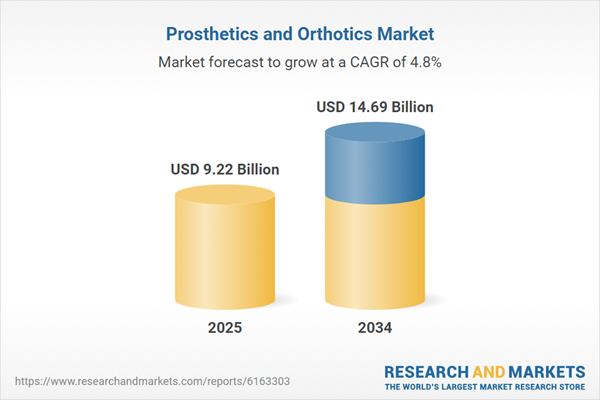Prosthetics and Orthotics: Introduction
The devices that are designed and created in prosthetics imitate the functioning of real body parts and appearance. The development of these devices is custom made to fit the exact need and requirement of person's anatomy.Orthotics are used in cases of development and placement of devices that support or correct the musculoskeletal deformities or abnormalities. These devices could include braces, shoe inserts, and some other devices as supportive devices. Alignments can be corrected and improved by the use of these devices.
Prosthetics and Orthotics Market Analysis
Prosthetics and orthotics are specialized fields in which designing, placement, and fitting of artificial limbs is performed in order to replace or support the disabled body parts. These devices are used to enhance mobility and functionality, and general well-being of people who have lost limbs, deformities, or musculoskeletal conditions.With the rising cases of sports injury and accidents, the demand for advanced prosthetics and orthotics is constantly rising. Due to the rising demand, key players are increasingly investing in advanced products in order to have an edge over the other competitors in the market. This has been favouring the prosthetics and orthotics market expansion and is likely to continue propelling the demand in the coming years as well.
The rapid advancement in prosthetic and orthotics field, such as the use lightweight materials and integration of technology in development of devices, is also aiding the prosthetics and orthotics market development. The integration of 3D printing and computer aided design is increasing the convenience of creating custom and personalized products for people, which is increasing its demand in the medical field as well. Along with the use of 3D printing, use of sensors is also an innovative step towards creating more secure and sensible devices in order to fit the requirements of the person in need.
Additionally, the increased emphasis on natural appearance, use of eco-friendly solutions, coordination with healthcare and digital health systems, are among the key factors aiding the market growth.
Prosthetics and Orthotics Market Segmentations
Prosthetics and Orthotics Market Report and Forecast 2025-2034 offers a detailed analysis of the market based on the following segments:Market Breakup by Product
- Orthotic Products
- Upper Limb
- Lower Limb
- Spinal
- Prosthetic Products
- Upper Extremity
- Lower Extremity
- Liners
- Sockets
- Modular Component
Market Breakup by Region
- North America
- Europe
- Asia Pacific
- Latin America
- Middle East and Africa
Prosthetics and Orthotics Market Overview
The growth of the prosthetics and orthotics market is driven by several factors as increasing personalization, focus on natural appearance of devices, involvement of advanced technologies, and eco-friendly materials. The rising case of diabetes is also leading to increased demand for prosthetics and orthotics.Prosthetics and Orthotics Market Share by Region
Based on region, the global market was dominated by North America during the historical period and the region is most likely to continue leading the global market. The dominance of the region can be attributed to the developed healthcare infrastructure in the region, favourable reimbursement policies by the governments, and the rising investment by the government, among others.Prosthetics and Orthotics Market: Competitor Landscape
The key features of the market report include patent analysis, grants analysis, clinical trials analysis, funding and investment analysis, partnerships, and collaborations analysis by the leading key players. The major companies in the market are as follows:- Ossur
- Blatchford Inc
- Ottobock
- Bauerfeind AG
- WillowWood Global LLC
- Ability Matters Group
- Smith+Nephew
- Esko Bionics
- Mobius Bionics
- Boston Orthotics & Prosthetics
This product will be delivered within 3-5 business days.
Table of Contents
Companies Mentioned
- Ossur
- Blatchford Inc
- Ottobock
- Bauerfeind AG
- WillowWood Global LLC
- Ability Matters Group
- Smith+Nephew
- Esko Bionics
- Mobius Bionics
- Boston Orthotics & Prosthetics
Table Information
| Report Attribute | Details |
|---|---|
| No. of Pages | 350 |
| Published | July 2025 |
| Forecast Period | 2025 - 2034 |
| Estimated Market Value ( USD | $ 9.22 Billion |
| Forecasted Market Value ( USD | $ 14.69 Billion |
| Compound Annual Growth Rate | 4.8% |
| Regions Covered | Global |
| No. of Companies Mentioned | 10 |









